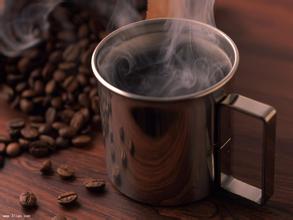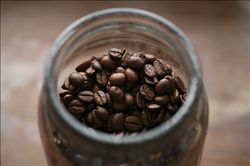Introduction to the method of thickness evaluation of espresso oil
Introduction to the method of thickness evaluation of espresso oil
A series of complex chemical changes occur during coffee roasting to produce large amounts of carbon dioxide. Most of the carbon dioxide will be released naturally during the storage of ripe coffee beans, but more carbon dioxide will remain in the cell wall.
The pump pressure correlation of 9 bar is the insoluble oil in emulsified coffee. In fact, water pressure has another function, which is to make water supersaturated to carbon dioxide, increasing the solubility of water to carbon dioxide, thus dissolving more times more carbon dioxide than normal natural pressure. That's why hot water forms thousands of tiny bubbles when it passes through pressed powder.
The formation of the foam layer requires bubbles, as well as compounds or particles that like to surround these bubbles to make the structure of these bubbles stable and more elastic. The coating effect of these chemical components will involve surfactants. The formation of vesicles is mainly related to melanoidin (melanoidin). Melanoidin is a general term for a series of compounds formed during coffee roasting, and scientists know little about it.
Proteins and melanoidins can cover bubbles because they have ingredients that repel water-also known as hydrophobicity. So they approach gas rather than water, and because of their hydrophobicity, these substances are eventually adsorbed on the bubbles, forming a bubble layer.
There are other hydrophobic substances in coffee: fat / oil. The fat here is separated because "fat" is the solid form of oil (oil), which coexists in coffee.
The reasons for the disappearance of crema are grease / oil and gravity. When the surfactant dissolves in water, gravity pulls down the coffee material stored in the foam layer, which pulls the substance that covers the surface of the bubble, causing the bubble to become fragile and inelastic, and eventually burst quickly.
The speed at which the foam layer disappears mainly depends on the speed at which gravity acts. A cup of properly extracted concentrated surface foam will last longer than a cup of underextracted concentrate. This is because the overall composition of the correctly extracted concentrate will be thicker, which can be confirmed by the tactile sensation concentrated in the mouth.
Color of Crema: what can it tell us?
The normal extraction of crema should be reddish brown, but what does it say when the concentrated crema is light, or very dark, almost scorched brown? Part of the answer has to do with concentration itself. Because crema is a bubble wrapped in carbon dioxide in concentration, if the foam layer looks dark, we can usually be sure that the concentrated liquid will also be very dark. An in-depth understanding of the nature of crema will be of great help for baristas to make a good cup of concentrate. Today, the teacher of Chongqing Brista barista barista training course will give you a detailed analysis of crema to help you understand espresso and improve coffee making skills.
In the process of looking for a cup of concentration that is not bitter and has a great flavor, you may encounter a bad concentration every day, and crema is a very important indicator. Whether it's drinking in a store or making it yourself at home, a cup of thick dark brown crema concentrate is what we are looking for.
Concentrated coffee bars covered with a layer of crema were first made in coffee bars and are now usually attributed to Achille Gaggia (the first Italian to design a coffee machine that provides real high pressure). In fact, if you have seen posters for coffee machines before World War II, such as the classic Victoria Arduino poster, you will see that there is almost no crema in the picture, just a glass of black liquid. Gaggia's "Crema Naturale" coffee machine uses a pull rod piston, which has changed the perception of concentration among all mainstream coffee drinkers. Of course, Gaggia himself should be the first to be hit.

Important Notice :
前街咖啡 FrontStreet Coffee has moved to new addredd:
FrontStreet Coffee Address: 315,Donghua East Road,GuangZhou
Tel:020 38364473
- Prev

Coffee consumption in Italian coffee pots-types of siphon coffee pots
Coffee consumption in Italian coffee pot-siphon coffee maker type 1. Turn the coffee maker's power switch to the heating gear every morning to heat the coffee maker. Make sure the power indicator is on and hang the two filter handles on the coffee faucet of the machine. 2. Pour the coffee beans into the bean bowl of the bean grinder and pour out only the amount of beans needed for that day. Re-seal the remaining coffee beans and put them in a dry
- Next

Introduction to extraction time and Water temperature of Belgian Pot Coffee
Introduction to the extraction time and water temperature of Belgian pot coffee beverage is a very unstable liquid, which may change its characteristics and taste at once. This is the main reason why the espresso machine (Espresso Machine) was invented. The espresso machine can extract several cups of coffee in succession, and the high pressure in the brewing process can remove the oil and glue in the coffee beans.
Related
- What brand of black coffee is the most authentic and delicious? what are the characteristics of the flavor of the authentic Rose Summer Black Coffee?
- Introduction to the principle and characteristics of the correct use of mocha pot A detailed course of mocha pot brewing coffee is described in five steps.
- Which is better, decaf or regular coffee? how is decaf made?
- How much is a bag of four cat coffee?
- How about four Cat Coffee or Nestle Coffee? why is it a cheap scam?
- Which is better, Yunnan four Cats Coffee or Nestle Coffee? How about cat coffee? is it a fake scam? why is it so cheap?
- How about Cat Coffee? what grade is a hoax? which instant coffee tastes better, four Cat Coffee, Nestle Coffee or G7 coffee?
- Process flow chart of coffee making-Starbucks coffee making process what coffee tastes good at Starbucks
- The top ten best coffee beans in the world Rose summer coffee or Tanzanian coffee tastes good
- Yunnan four cat coffee is good to drink?_four cat coffee is a big brand? four cat blue mountain coffee is fake?

